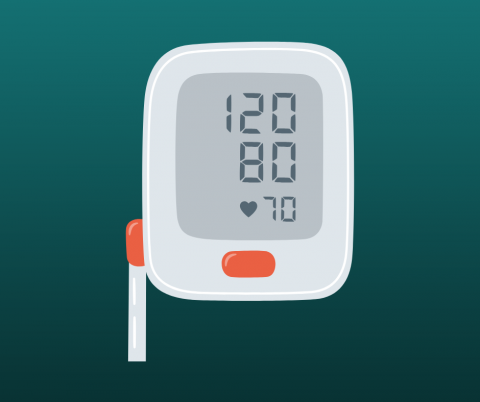Closing the Gap on Health Disparities and Outcomes in Hypertension (2024-2025)
Background
Hypertension affects over 116 million adults in the United States, with direct costs projected to exceed $220 billion by 2035. Over a third of Americans with hypertension are not aware they have it. Despite the existence of proven interventions, only 48% of patients who are diagnosed with hypertension have their condition controlled.
Disparities are well documented in hypertension treatment, control and outcomes. The prevalence of hypertension among Black Americans is much higher than among non-Hispanic white Americans, and deaths attributable to hypertension are twice as frequent.
In Durham County, the prevalence of hypertension is 42%, with a strong association with residential racial isolation. This data suggests opportunities to intervene at the neighborhood level to reduce hypertension disparities and improve overall population health.
Project Description
Building on the work of previous teams, this project will focus on evaluating the policy implications of the January 2022 ruling from the Centers for Medicare and Medicaid Services and the Agency for Healthcare Research and Quality. This ruling was designed to close the gap in health disparities and treatment outcomes for persons with uncontrolled hypertension by enabling patient-reported self-monitored blood pressure readings to “count” as valid and reliable healthcare quality measures. It is also meant to advance the value and visibility of patient-reported blood pressure and to expand payment options and reimbursement models for healthcare systems, clinics and providers.
The team will strive to engage patients in learning the digital literacy skills required for self-monitored blood pressure reporting as an evidence-based approach to improving care of uncontrolled hypertension.
Team members will refine and implement an intervention to encourage participation in a blood pressure reduction initiative. They will conduct 1:1 telephone outreach, teach classes and partner with community organizations to achieve this goal.
The team will also create a portfolio of policy briefs, blog posts and journalistic pieces for lay leaders and build on partnerships in the local community (e.g., Lincoln Community Health Center, North Carolina Central University, Durham Department of Parks and Recreation) and at the national level (e.g., American Heart Association, Centers for Disease Control and Prevention, American Colleges of Preventive Medicine).
Anticipated Outputs
Delivery of blood pressure cuffs; improved website access to Zoom platform for classes; policy briefs, blog posts and journalistic pieces
Student Opportunities
Ideally, this project team will include 4 graduate students and 20 undergraduate students. Applicants may come from a variety of academic backgrounds, including healthcare disciplines (nursing, medicine and behavioral science) as well as population health, health policy and the humanities. Students with additional social science backgrounds are encouraged to apply.
Students will have the opportunity to contribute to publications and presentations at a number of national professional forums, including the American Heart Association Scientific Sessions; American Academy of Nursing’s Transforming Health, Driving Policy Conference; American Public Health Association’s Annual Meeting; and Academy Health Annual Research Meeting.
This project includes an optional summer component in 2024. Two students will work 10-20 hours per week for eight weeks during June and July to conduct a literature review and hold focus groups with community partners.
Timing
Summer 2024 – Spring 2025
- Summer 2023 (optional): Conduct baseline cost analysis; work on Institutional Review Board (IRB) amendment to existing protocol; complete literature review on policy implementation strategies; hold focus groups with community partners to gather information on local implementation strategies in high-risk areas
- Fall 2023: Collect data via telehealth and patient portals; conduct 1:1 intervention with patients; pitch intervention to policymakers, health administrators and clinicians/provider groups
- Spring 2024: Clean and analyze data; prepare presentations and publications
Crediting
Academic credit available for fall and spring semesters; summer funding available
See earlier related team, Closing the Gap on Health Disparity and Outcomes in Hypertension (2023-2024).

Team Leaders
- Holly Biola, School of Medicine-Medicine: Geriatrics
- Hayden Bosworth, School of Medicine-Psychiatry and Behavioral Sciences
- Alex Cho, General Internal Medicine
- Christopher Granger, School of Medicine-Medicine: Cardiology
- Bradi Granger, School of Nursing
- Neha Pagidipati, School of Medicine-Medicine: Cardiology
- Stuart Smith, Office of Finance Services, Duke University Health System
/undergraduate Team Members
-
Anna Tharakan, Biology (BS)
/zcommunity Team Members
-
Lincoln Community Health Center
-
North Carolina Central University
-
Benniegirl
-
Durham Department of Parks and Recreation
-
American Heart Association
-
Center for Disease Control and Prevention
-
The American College of Preventive Medicine
